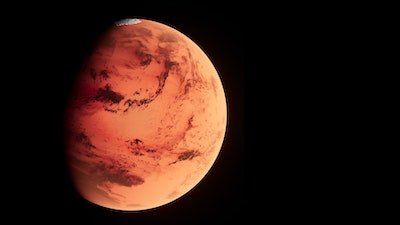
A Methane Explosion on Mars—Evidence for Life?
Much of the earth’s methane (natural gas) originates from biological activity. That is, most methane on earth comes from the biochemistry of living things. If life on earth arose naturally as most evolutionists think, then life ought to have arisen elsewhere in the universe. Hence scientists today increasingly look for signs of life elsewhere in the universe. Within the solar system, Mars appears most promising for life outside of the earth, so much attention has been given to the search for biogenic markers, such as methane, on Mars.
For the most part, scientists do not think that the methane found elsewhere in the universe is the result of living things.
Methane was first detected on Mars about 15 years ago, though in minute quantities. However, some of those earlier measurements have been controversial, and the measurements have varied from source to source. Furthermore, not all methane is biogenic. There are recognized sources of methane on earth that have nothing to do with living things. And methane is common throughout the universe. Methane is present in the atmospheres of the gas giant planets in our solar system. Astronomers have detected methane in comets. The atmosphere of Titan, the largest satellite of Saturn and the only planetary satellite with an atmosphere, contains methane. In fact Titan may have lakes of methane on its surface. We even find methane in gas clouds between the stars. For the most part, scientists do not think that the methane found elsewhere in the universe is the result of living things. Hence, the discovery of methane on Mars ought not to be surprising, nor should it be taken as evidence of life.
On December 16, NASA scientists announced that an instrument aboard the Martian rover Curiosity had measured fluctuations in the amount of methane in the Martian atmosphere. The Tunable Laster Spectrometer (TSL), part of the Sample Analysis at Mars (SAM) package aboard Curiosity made twelve measurements over a 20 month period. Most of the methane measurements were on the order of one part per billion in the thin Martian atmosphere. Judging by the published errors of measurement, these measurements are at the limit of detectability of the TSL. In fact, the first measurement (made on October 25, 2012) was for a negative amount of methane, so the measurement appears to have been repeated two days later, yielding a positive result. That was the only negative measurement. Over a two month period in late 2013 and early 2014, four measurements were noticeably higher, averaging seven parts per billion. This was roughly ten times greater than the average of seven other measurements deemed to be low levels.
So what happened about a year ago? No one knows. As on earth, there are several ways that scientists think that methane can be produced on Mars. Some of these mechanisms are chemical interaction with subsurface water and rocks, solar ultraviolet degradation of organic molecules on the surface, and comet impacts. At the same time, solar radiation can further break down methane so that the amount of atmospheric methane is reduced. With sources of both production and destruction, one would expect that over time the amount of methane in the Martian atmosphere would reach a steady state. Apparently, there was some localized event on Mars a year ago that introduced a larger than normal amount of methane in the vicinity of Curiosity. Diffusion in the atmosphere and winds eventually dissipated the increased local methane. What was the event that caused the local increase in methane? Again, no one knows. One possibility is outgassing from below the Martian surface. Of course, some evolutionists will suppose that microbes living below the surface produced the gas that built up pressure that finally was released into the atmosphere, but the interaction of water and rock below the surface could do the same thing.
A well-established scientific principle is biogenesis, that life comes only from living things and thus does not arise spontaneously.
So this new study does not constitute evidence that life exists on Mars, though it certainly will be spun that way. A well-established scientific principle is biogenesis, that life comes only from living things and thus does not arise spontaneously. This conclusion also happens to agree with the biblical account of creation. The seemingly endless search for life on Mars is motivated by the need of evolutionists to demonstrate the life arises spontaneously wherever the conditions are right, despite abundant evidence from science that this is not possible. As Christians who believe in the authority of the Bible and in true science, we understand that God created that life to fulfill His purpose. We see no purpose for Martian life, so we don’t expect there to be life on Mars. However, we don’t know all. If in the unlikely event that there is life on Mars, we are confident that God has a purpose for it.
Recommended Resources

Answers in Genesis is an apologetics ministry, dedicated to helping Christians defend their faith and proclaim the good news of Jesus Christ.
- Customer Service 800.778.3390
- Available Monday–Friday | 9 AM–5 PM ET
- © 2026 Answers in Genesis




